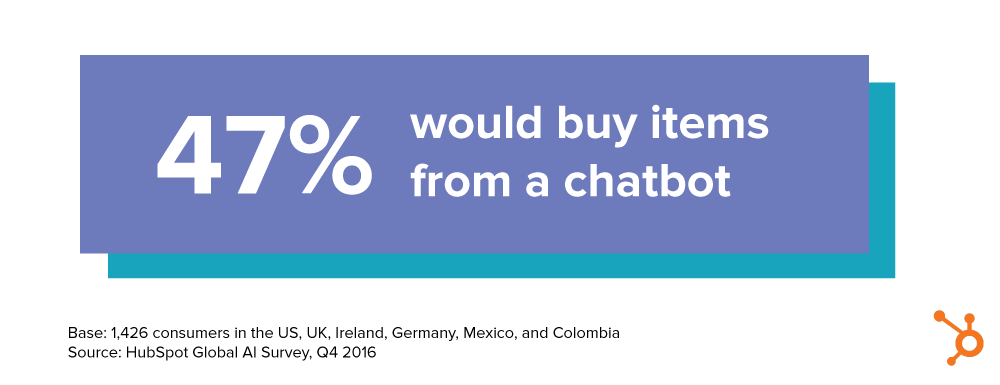
In the Age of the Bot, Are Humans Obsolete?
I've got a secret I've been hiding under my skin
My heart is human, my blood is boiling, my brain IBM
-Mr. Roboto
When Styx released Mr Roboto in 1983 it captured our fears about not knowing if you were speaking to a human or a robot. Well, we are finally there. Today many customer interchanges are managed without human interaction. And Gartner predicts that by 2020, 85% of all customer interactions will be managed without a human.
By 2020
web browsing sessions done without a screen
all searches will be done with voice
interactions managed without a human
How can this happen? With chatbots — or simply, bots.
Chatbots, Machine Learning and AI
Let me break down the technology behind what’s known as a “user experience platform” and describe what happens when you speak to an Amazon Echo, GoogleHome or HomePod “assistant” (read: chatbot). There are several services that make it easier to try out these new technologies. For simplicity, I’ll explain the technology using API.AI (from Google), one of several frameworks to use when creating a chatbot with machine learning. First, a few definitions:
- A chatbot is a computer program designed to simulate conversation with human users, especially over the Internet.
- Machine learning is a method to learn from data rather than explicitly tell the program what to do.
Here’s how it works: a bot interacts via an application interface, or API, with a program that uses machine learning. It’s like Ping-pong: I say something and a program breaks down what I say, combines this with other data in order to parse what I am saying, and then responds appropriately. Then I respond and the program learns more about our conversation. The back and forth continues until I get what I want.
Early chatbots had it easy since all the user was trying to do was reset an account or find someone to talk to about an order. The bot only needed say one thing. That’s no longer the case. Today’s bot interactions are far more complex. Need proof? Have an Amazon Echo or similar AI device at home? Do you talk to it — she, in the case of Alexa — like it’s human?
Most likely you regularly interact with bots — and many not even realize you’re speaking with a bot. That’s how far the tech has come.
Rise of the Machine
As people become more comfortable with the technology, chatbots are growing in popularity. And why not? We’re busy! We need information quickly and bots can speed the process. One more component is the widespread acceptance of voice-enabled search, which has increased dramatically in the past year.

Messaging services featuring bots — often voice-enabled bots — are now more popular than social networks. It’s like having a friend help you shop. No more endless scrolling in search of a particular item. No more uncertainty about which link to click. Just tell the bot exactly what you want and how it can filter content for you. Your website can’t do that. It does this via an API.
Chatbots use the concept of conversations just like humans do. If you say something to me, I’ll recall that next time we speak. Bots are much the same. A bot remembers what you said in one conversation, and tries to classify that information into an entity (an address, phone number, quantity, etc.) for retrieval in a future conversation, like in this example:
Me: Hello? Can you help me?
Bot: Of course. What can I help you with?
Me: I’m living in Boston and I know nothing about the history of the city.
Bot: Boston is an amazing place. Sorry you’re having rain today. (The bot recognizes that you are talking about the City of Boston and accesses reference data, like weather forecasts, so it can respond with relevant information.)
Me: It’s a good day to stay inside. Can I order a book about the history of Boston?
Bot: Do you want suggestions or do you know what book you want? (From prior conversations the bot has already learned what kind of books I like to read so it can make appropriate recommendations.)
Me: Options?
Bot: There are some highly rated photography books. Or would you prefer a classic?
Me: I only want to spend $20.
Bot: New or used? (With a $20 budget, the bot considers whether to recommend a used book.)
The more the bot knows about me, the greater benefit it can offer by providing highly relevant information.
The Technology Behind the Bot
Intents
Intents are actions correlated to elicit a specific response. For example, you might say, “I am looking for black shoes.” If I was in a store, a salesperson would probably point me to the footwear department where another salesperson would ask me what I needed help with.
A bot’s logical response to the same question would be to show me a range of black shoes and respond enthusiastically, “we have many wonderful black shoes. What event are the shoes needed for?”
An intent is mapped to an action and is processed for fulfillment. The best AIs use machine learning to get better at evaluating your situation. They use data they know about you and data they know about others like you to help you.
Entities
Entities are like containers where we keep similar types of data so that we can add synonyms to that entity. For instance, creating the entity “cat” allows users to say “kitty,” “kitten,” “feline,” or “tomcat” and still be understood.
Training
To be helpful, bots need to know the right thing to say. For this to happen, they need training. Machine learning allows bots to continuously get “smarter” as they learn from each conversation. The best platforms, for instance Google, have a training mode that captures all the intents for which the bot wasn’t sure how to respond and uses those to teach. Default responses are helpful for conversation starters until the bot has amassed enough information to truly help the user.
For instance, API.AI has a feature called “small talk” that allows developers to make the application seem more human. The bot can be programmed to provide humorous responses to specific questions, for instance. But bots can get quite complicated. Setting them up is easy, implementing a tool to capture all your users requires some experience and a good understanding of interactive architecture.
Integrations
One bot can be used through multiple platforms, such as voice, Slack or website. Google, Apple and Amazon all sell devices that listen to you. They convert your spoken words to text and process language using a bot.
Building Your Own Bot
Developing a device or app that could benefit from a chatbot? APIs from Google, Microsoft and a few others make it possible to quickly build your own bot. We do a fair amount of that type of development work at ICS helping customers take advantage of these powerful APIs so their users can more easily access critical data. If you’re thinking about building a bot/voice-enabled device, get in touch.